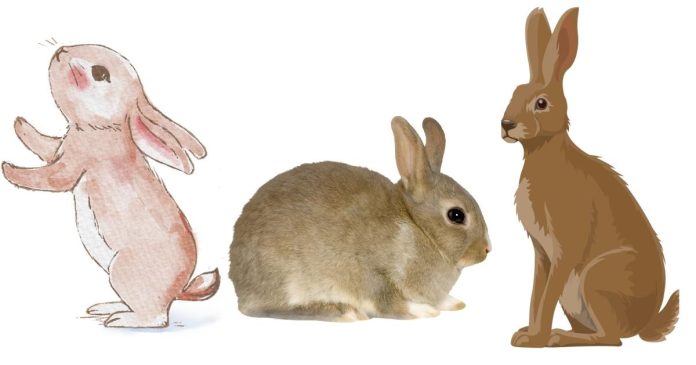When it comes to small, fluffy mammals with long ears, the terms rabbit, bunny, and hare are often used interchangeably. However, these words have distinct meanings and should not always be treated as synonyms. While rabbits and hares belong to the same family, Leporidae, they are separate species with unique characteristics. A bunny, on the other hand, is simply an informal term for a rabbit, often used to describe young or small rabbits. Let’s explore the differences in detail.
Rabbits vs. Hares
1. Taxonomy and Species
- Rabbits:
- Belong to the genus Oryctolagus (e.g., the European rabbit) or Sylvilagus (e.g., cottontail rabbits).
- There are more than 30 species of rabbits worldwide.
- Hares:
- Belong to the genus Lepus.
- Common species include the snowshoe hare and the Arctic hare.
2. Physical Differences
- Rabbits:
- Smaller and have shorter ears compared to hares.
- Their fur is softer and often uniform in color.
- They have smaller hind legs, making them less adapted to high-speed running.
- Hares:
- Larger in size with longer ears, often tipped with black.
- Their fur is coarse and can change color (e.g., white in winter for camouflage).
- They have powerful hind legs, allowing them to run fast and escape predators.
3. Behavior and Habitat
- Rabbits:
- Live in groups and prefer to stay in burrows or underground tunnels, called warrens.
- Social animals that thrive in environments with plenty of vegetation for hiding and foraging.
- Known for their quiet and timid nature.
- Hares:
- Solitary creatures that do not dig burrows. Instead, they create simple nests on the ground, called forms.
- More aggressive and rely on their speed and agility to evade predators.
- Prefer open spaces like meadows, grasslands, and tundra.
4. Reproduction
- Rabbits:
- Baby rabbits, known as kittens, are born blind, hairless, and helpless, requiring care from their mother.
- Hares:
- Baby hares, called leverets, are born fully furred with open eyes and can move shortly after birth.
5. Behavior Toward Predators
- Rabbits:
- Freeze or hide when faced with danger.
- Hares:
- Use their speed and ability to zigzag to evade predators, running up to 45 mph.
What About Bunnies?
- Bunny:
- The term “bunny” is not a scientific or zoological term. Instead, it is an informal name often used to describe young or baby rabbits.
- It is also used affectionately to refer to rabbits in general, regardless of their age.
Summary of Key Differences
| Feature | Rabbit | Hare | Bunny |
|---|---|---|---|
| Scientific Category | Genus Oryctolagus or Sylvilagus | Genus Lepus | Informal term for rabbits |
| Physical Traits | Smaller, softer fur, shorter ears | Larger, coarse fur, longer ears | Same as rabbit |
| Habitat | Burrows or warrens | Ground nests (forms) | Same as rabbit |
| Offspring Development | Helpless, born blind | Fully developed at birth | Same as rabbit |
| Behavior | Social and timid | Solitary and fast runners | Same as rabbit |
Fun Facts
- Hares are generally faster and more adapted to running than rabbits due to their strong hind legs.
- Domestic rabbits are descendants of the European rabbit (Oryctolagus cuniculus), while hares remain wild animals.
- The phrase “mad as a March hare” comes from the erratic behavior of hares during their breeding season.
While rabbits, hares, and bunnies may seem similar at first glance, they differ in significant ways. Rabbits and hares are distinct species with unique physical traits, behaviors, and habitats. A bunny, on the other hand, is simply a playful or affectionate term for a rabbit. Understanding these differences helps appreciate the diversity and uniqueness of these adorable creatures.


